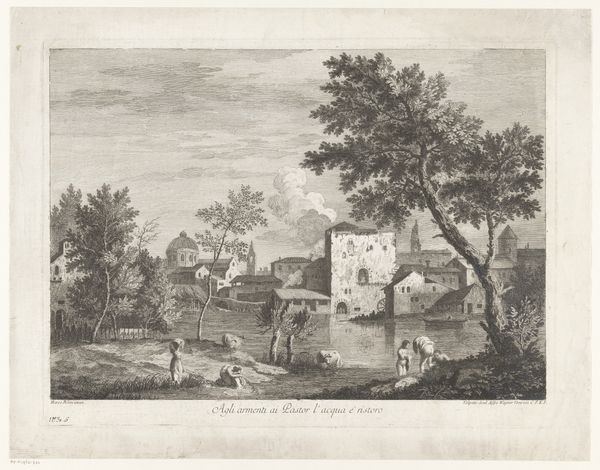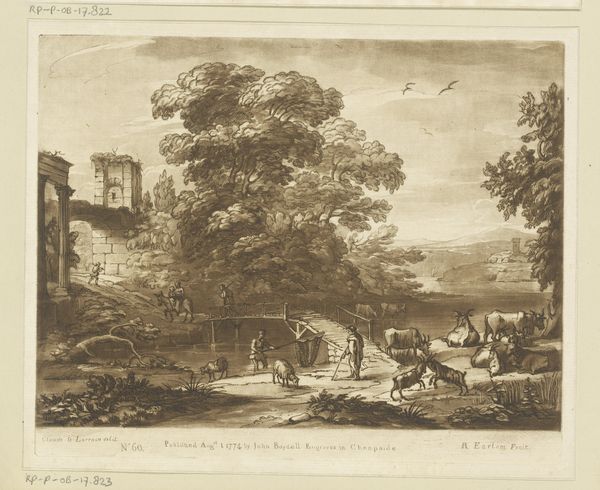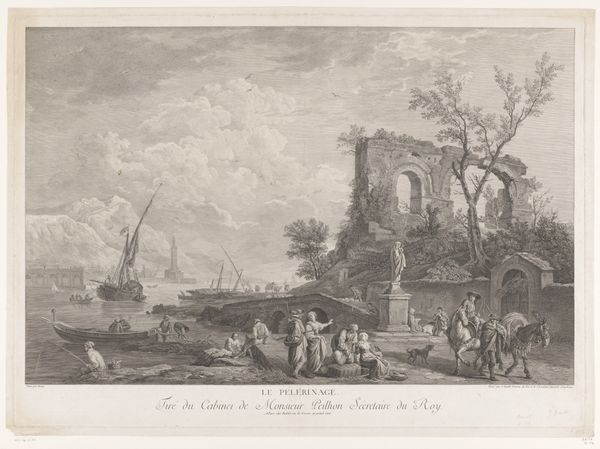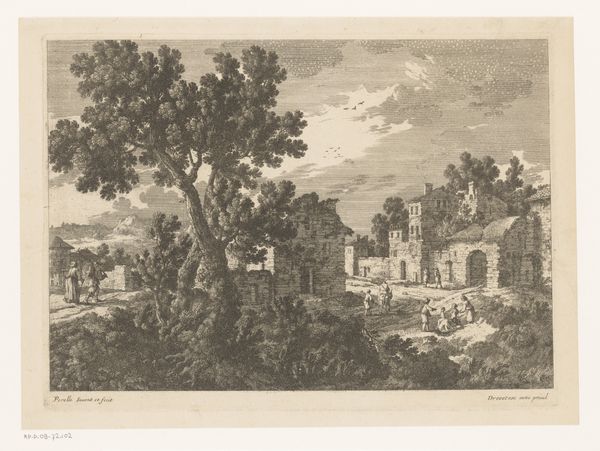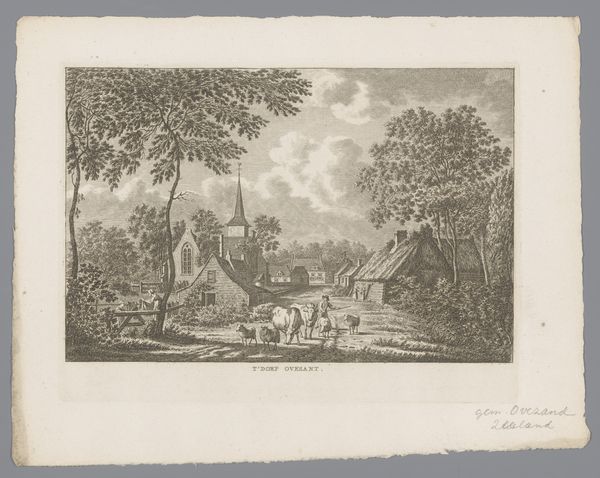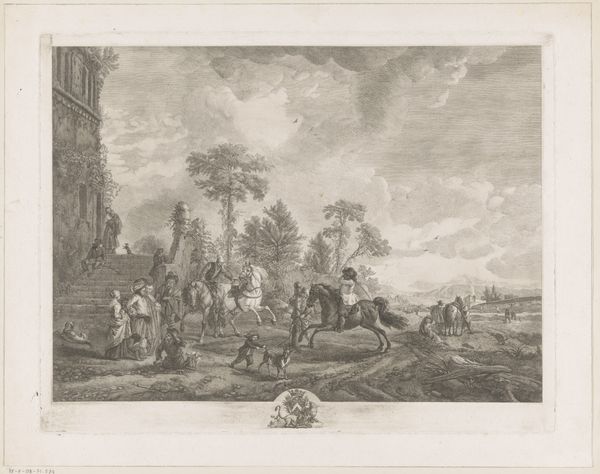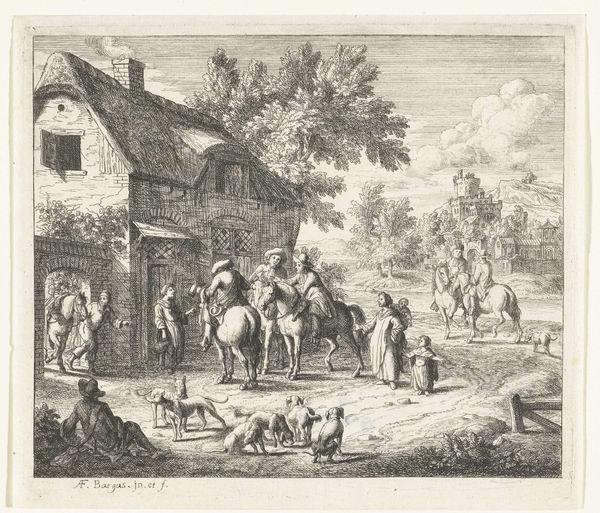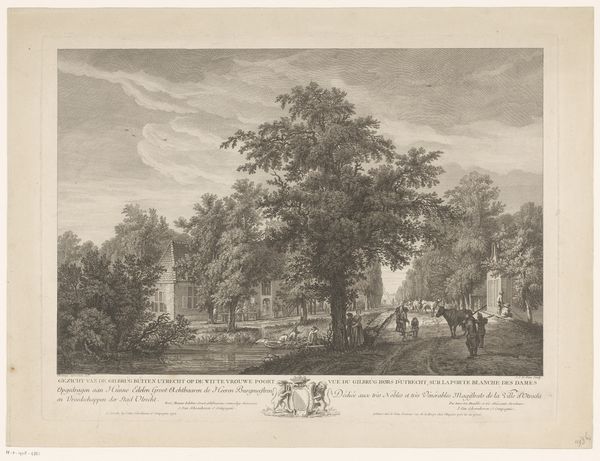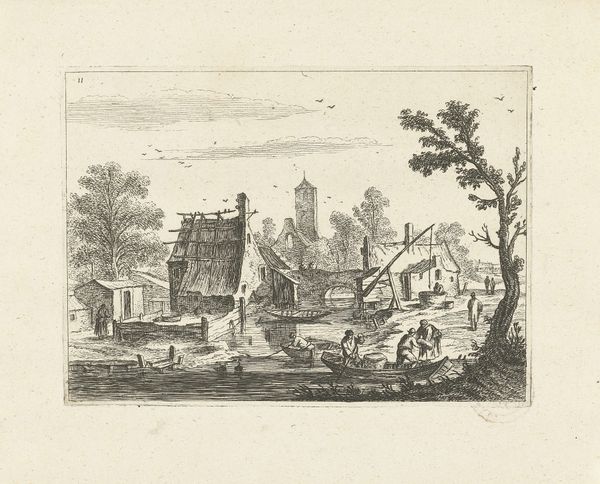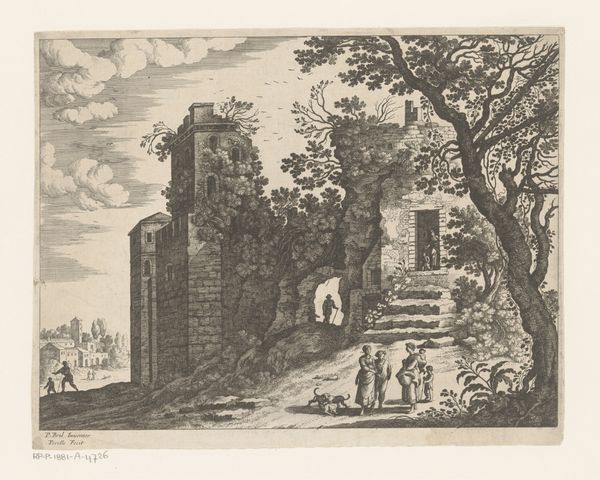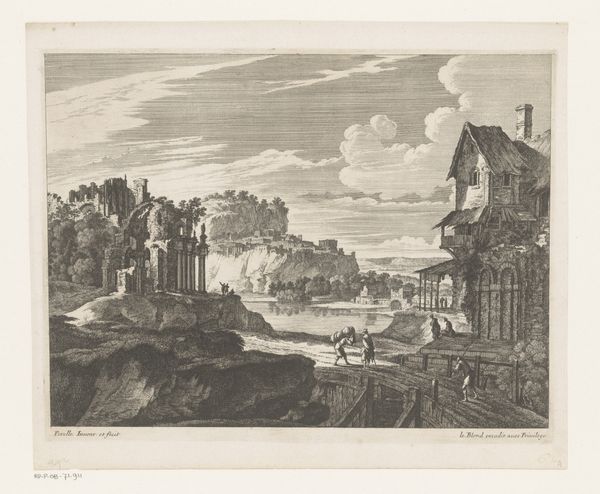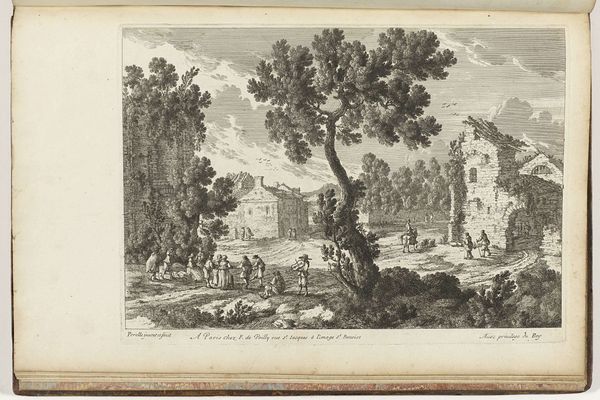
print, engraving
#
neoclacissism
# print
#
landscape
#
historical photography
#
19th century
#
cityscape
#
engraving
Dimensions: height 324 mm, width 411 mm
Copyright: Rijks Museum: Open Domain
Editor: So, this is "View of the Environs of Naples," created sometime between 1757 and 1857 by Jean-Baptiste Racine. It's an engraving. The scene has this dreamlike, almost melancholy quality with those classical ruins and the everyday life unfolding in the foreground. What pulls you into this piece? Curator: Oh, this print whispers stories, doesn’t it? I get lost in the dance between the grandeur of the decaying architecture and the humble beauty of daily existence. Look at the figures. Some scholars call this Neoclassicism. It reminds me of the ephemeral nature of glory itself. I love to ask, were these monuments reminders of Naples’s great past or hints about its future? Editor: That's interesting! The 'ephemeral nature of glory'. I hadn’t considered it in terms of cycles of history like that. It seemed just like a pretty picture of ruins at first glance. Curator: It is pretty, yes, but the artistry invites a deeper dig. I imagine Racine standing there, feeling the weight of time on his shoulders as he sketched. Consider the composition. See how he frames the distant cityscape with those crumbling pillars and lush trees? The high contrast evokes drama and makes you feel like you are looking at a stage! Do you get that sense as well? Editor: Definitely a stage. The landscape feels very theatrical. The figures become almost actors. And I do notice how the darker foreground brings forward the lighter background, heightening the drama. Curator: It's like life is happening in front of some dramatic historical backdrop. And there’s always more. So, what will you carry away from looking at Racine's work? Editor: I guess that beauty and decay aren't opposites, but somehow intertwined, telling a bigger story than just one moment in time. Thank you. Curator: Precisely. These engravings contain whole worlds!
Comments
No comments
Be the first to comment and join the conversation on the ultimate creative platform.
